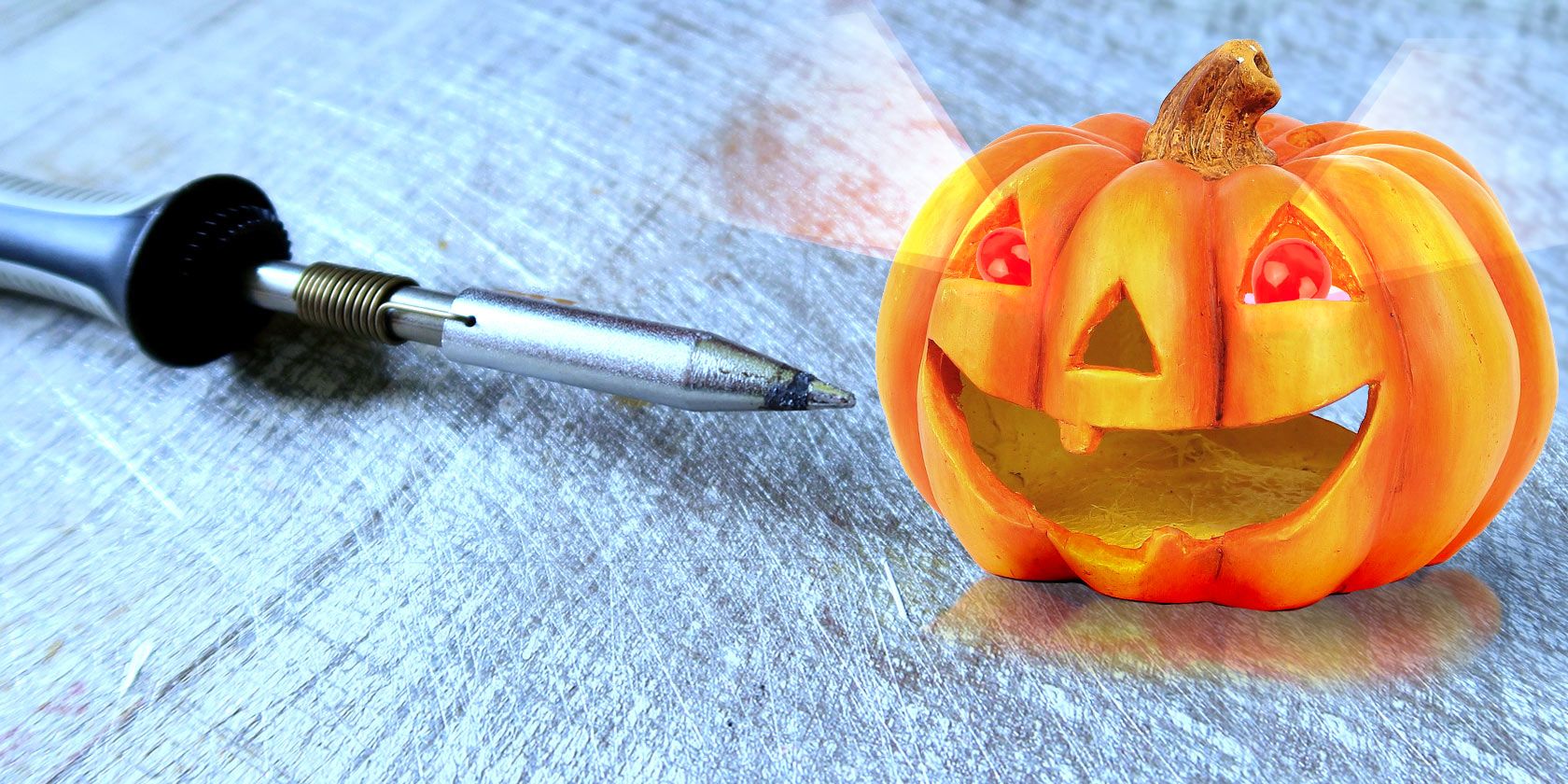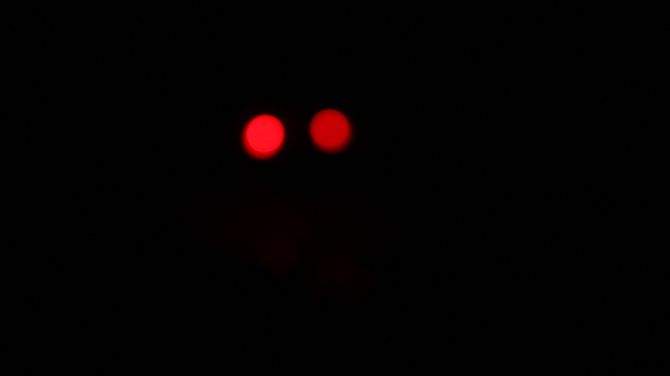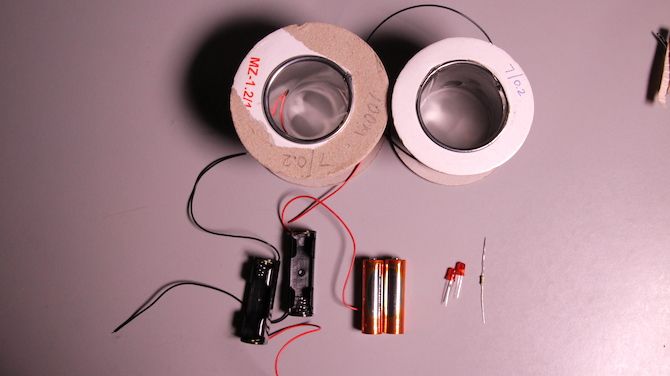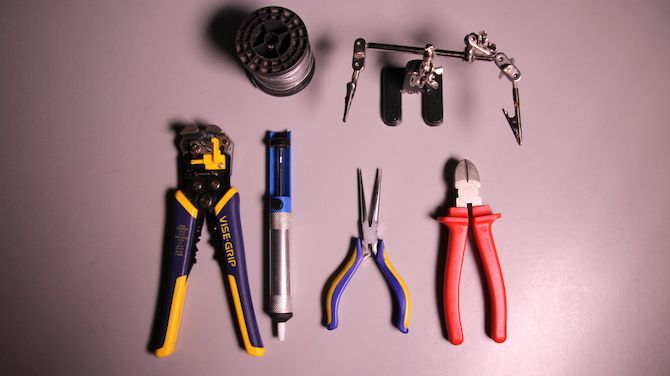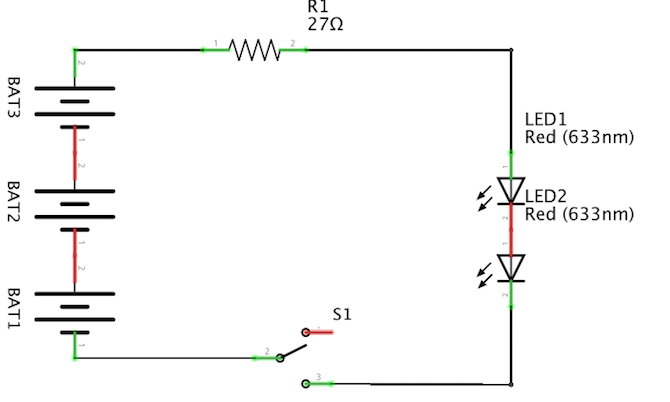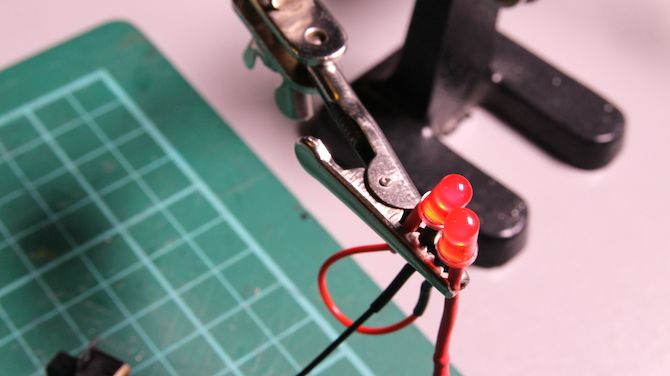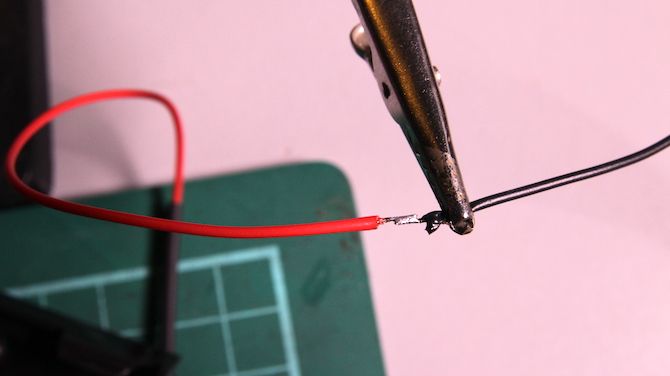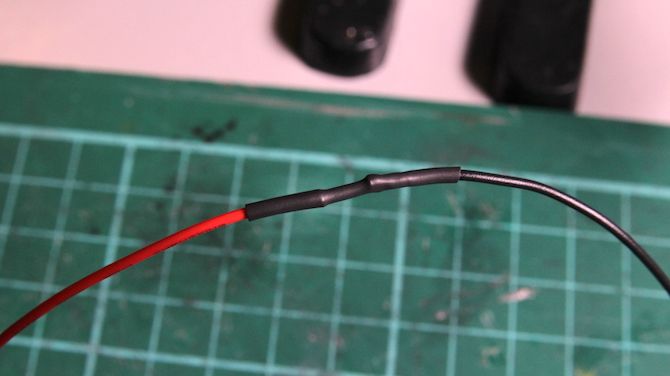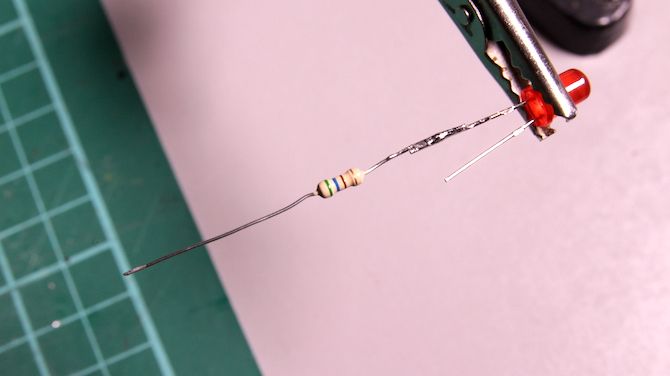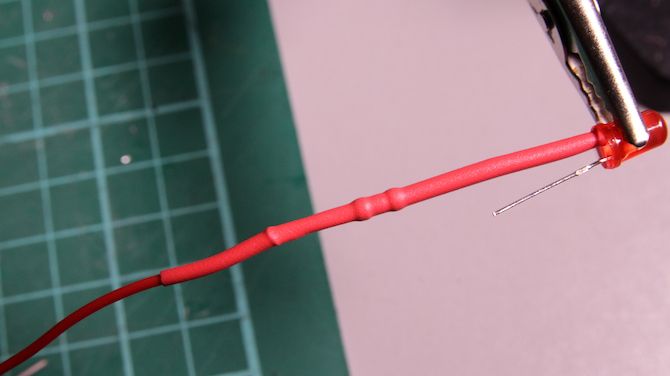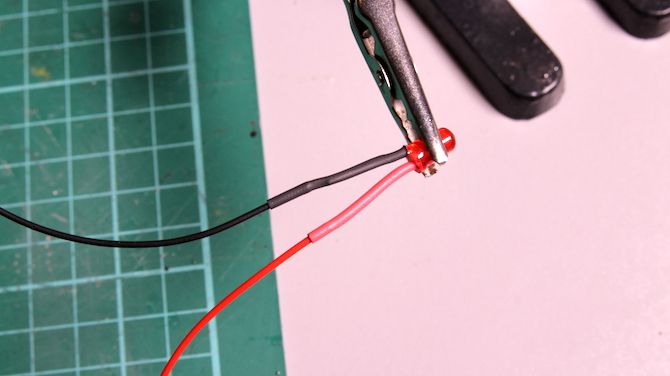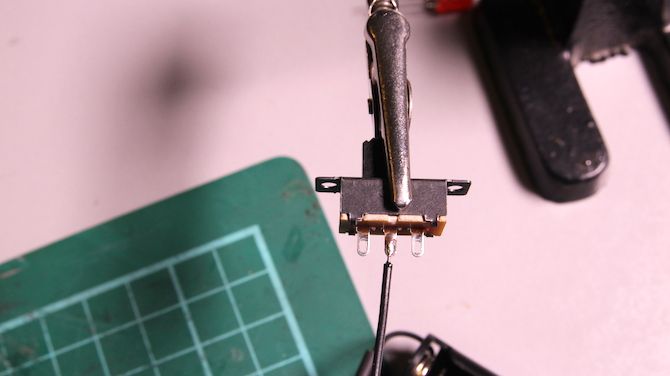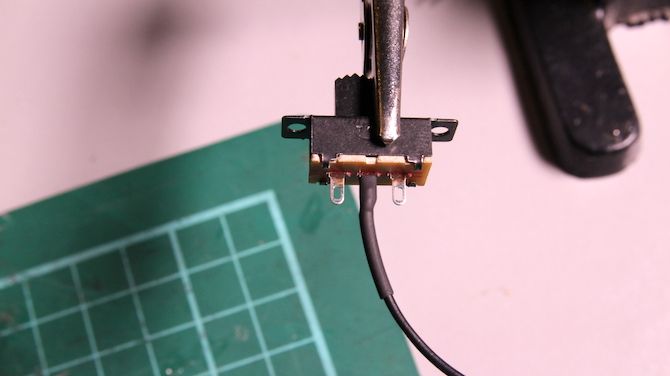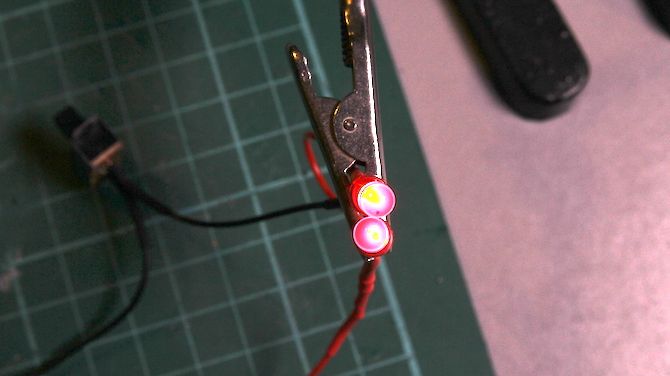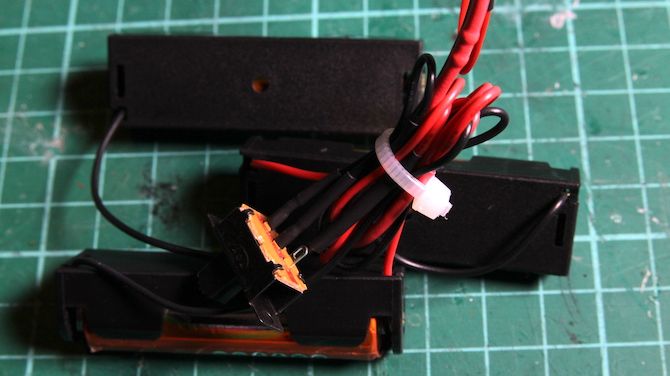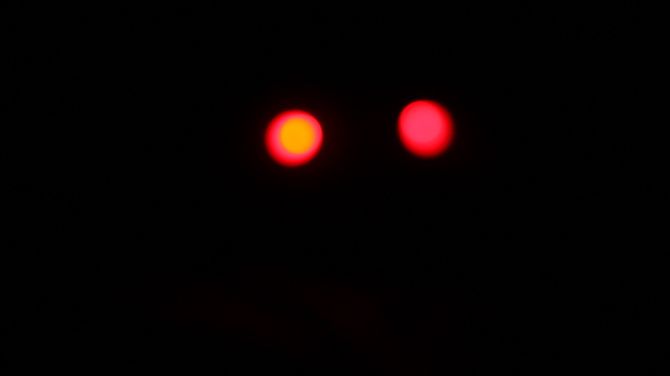Want to spice up your Halloween decorations this year? Learn how to make LED eyes for less than $5 in this beginner's electronics project.
This is a fun project that can be completed in an hour. If you have an Arduino starter kit you may have many of these components already, but don't worry, no Arduino is needed. The end result is a set of battery powered LED eyes that you can throw in the bushes or other objects.
Here's what they look like in the dark:
What You Need
- 2 x 5mm Red LEDs ($5.27/50) [UK]
- 1 x 27 Ohm resistor ($6.16/100)
- 3 x AA batteries
- 1 x SPDT switch ($11.78/20) [UK]
- Assorted heat shrink tubing ($6.29/set) [UK]
- Assorted 7/0.2 hookup wires($8.99/set) [UK]
Total cost: $44.44. That's not even close to $5!
Well, the trouble with purchasing electronic components online is that it gets very expensive if you only want one or two. It's a much better choice to purchase several of each item. These parts are enough to make 20 sets of eyes, for a total cost of $2.22 each! You also end up with some spare components for future projects -- always a good thing. Make sure you check out these electronic learning websites for more project ideas.
Tools
You will need some basic tools for this project. You could get by with tape and cable ties, but that wouldn't make a very reliable connection.
- Wire cutters
- Needle-nose pliers
- Wire strippers
- Solder-sucker
- Solder
- Soldering Iron
- "Helping hands" (UK)
Don't worry if you do not know how to solder, we've shown you how to get started. You may have many of these tools already, and you can get by without having all of them, however it's a simple selection that should be staples of your toolbox.
The Circuit
This is a simple circuit -- don't feel intimidated by it. Three AA batteries are connected in series (one after another). Doing this increases the voltage to 4.5V (each AA battery is 1.5V). Connecting the batteries in parallel would increase the current instead -- this is not necessary, as the minimum voltage needed to light a single LED is about 1.8V--2.4V, slightly more than one battery can provide.
A resistor is needed to limit the current going to the LEDs. Never connect an LED directly to the power supply, they will usually burn out. There is a set formula for calculating the required resistor (although LEDs will often tolerate a small difference). This website is brilliant for calculating what you need. If you would like to use more LEDs, or a different battery setup, enter the following details:
- Supply Voltage (4.5v in this case, from 3 x 1.5v batteries)
- Voltage drop across LED - this is usually between 1.8V and 2.4V
- Desired LED current -- usually 20mA
- Number of LEDs connected
The retailed you purchase your LEDs from will often state these specifications. Press click to calculate to get the resistor value you need.
Finally, the switch simply turns the circuit ON and OFF. You don't have to use this, although it will save the battery life when not in use.
Wiring It Up
First, make sure there are no batteries in the battery holders! It can be dangerous to heat up batteries too much. Solder the battery holders together, going from red to black to red. You should have a red and black cable (one at each end of your circuit so far) "free" for the rest of the circuit.
Make sure you cut a piece of heat shrink tubing and slip it over the wire before you start soldering. You want a piece with a diameter only slightly larger than your wire -- this will produce a nice tight "join" when heated up. Don't heat up the tubing just yet though.
Now solder the resistor to the anode (long, positive leg) on one of the resistors.
Solder the red wire from the batteries to the resistor. It can be a bit tricky to solder directly to component legs. Make sure your soldering iron tip is nice and clean. It may help to slightly file the component legs if things are being difficult. Use a piece of heat shrink tubing long enough to cover the whole resistor, but don't heat it up just yet.
Now solder the cathode (short, negative leg) of the LED to the anode of the next LED -- you may want to use a small length of wire for more flexibility in positioning when complete. Next, solder another wire to the cathode of the second LED -- this will go to the switch. Make sure you cut your heat shrink tubing and place it over the wires before soldering, but don't heat it up just yet.
Now solder this wire to the middle connector of the switch:
Don't forget the heat shrink tubing!
Finally, solder the last black wire from the battery packs to any outer leg of the switch -- it does not matter which one.
Testing
Now before you heat up all the heat shrink tubing, insert your batteries and check everything works. The switch should turn the LEDs on and off, and light wiggling and poking of the components should not cause the circuit to cut out.
If the circuit does not work, do not worry! There are some simple troubleshooting steps you can try:
- Ensure the batteries are fully charged.
- Switch the circuit on.
- Double check all the connections are soldered correctly.
- Double check the circuit is wired correctly.
If everything works, go ahead and remove the batteries and heat up the heat shrink tubing. A hairdryer is excellent for this, although a soldering iron can do the job in a pinch. Be careful about using a hot-air gun, the intense heat may melt the plastic components.
You may want to bundle the wires up with a small cable tie. Do this with the circuit on, to ensure you do not over-tighten and potentially break the circuit.
Now all that's left is to fit it to your project. Here's what they look like in the dark -- pretty cool:
Hot glue works well for a strong but not permanent fixing, although tape could work equally as well.
Now that you are a soldering ninja, you can progress onto more complex projects, such as these Arduino frights. Have a look at these awesome house decoration ideas, and make sure you check out how to sync your home lights and music -- it's amazing!
Have you made anything after following this tutorial? I'd love to know in the comments below!

